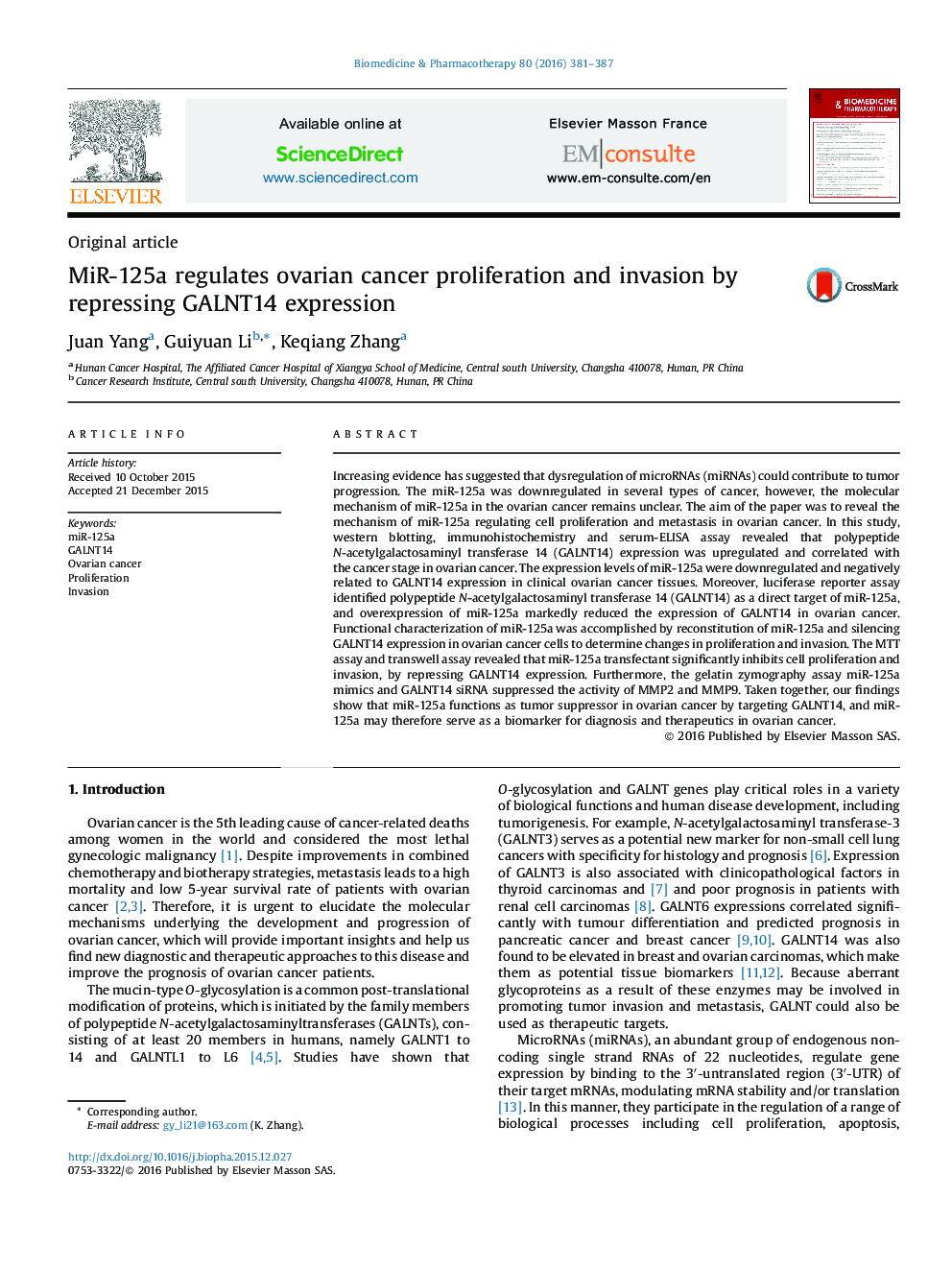| Article ID | Journal | Published Year | Pages | File Type |
|---|---|---|---|---|
| 2523770 | Biomedicine & Pharmacotherapy | 2016 | 7 Pages |
Increasing evidence has suggested that dysregulation of microRNAs (miRNAs) could contribute to tumor progression. The miR-125a was downregulated in several types of cancer, however, the molecular mechanism of miR-125a in the ovarian cancer remains unclear. The aim of the paper was to reveal the mechanism of miR-125a regulating cell proliferation and metastasis in ovarian cancer. In this study, western blotting, immunohistochemistry and serum-ELISA assay revealed that polypeptide N-acetylgalactosaminyl transferase 14 (GALNT14) expression was upregulated and correlated with the cancer stage in ovarian cancer. The expression levels of miR-125a were downregulated and negatively related to GALNT14 expression in clinical ovarian cancer tissues. Moreover, luciferase reporter assay identified polypeptide N-acetylgalactosaminyl transferase 14 (GALNT14) as a direct target of miR-125a, and overexpression of miR-125a markedly reduced the expression of GALNT14 in ovarian cancer. Functional characterization of miR-125a was accomplished by reconstitution of miR-125a and silencing GALNT14 expression in ovarian cancer cells to determine changes in proliferation and invasion. The MTT assay and transwell assay revealed that miR-125a transfectant significantly inhibits cell proliferation and invasion, by repressing GALNT14 expression. Furthermore, the gelatin zymography assay miR-125a mimics and GALNT14 siRNA suppressed the activity of MMP2 and MMP9. Taken together, our findings show that miR-125a functions as tumor suppressor in ovarian cancer by targeting GALNT14, and miR-125a may therefore serve as a biomarker for diagnosis and therapeutics in ovarian cancer.
